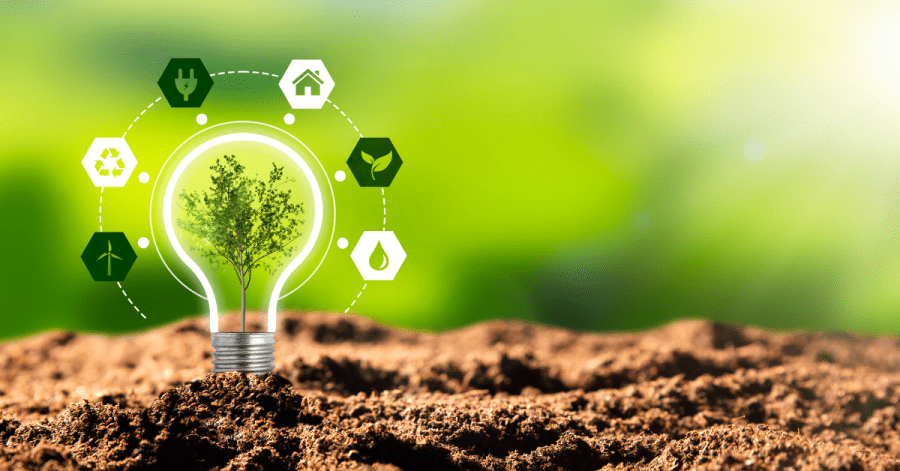Sustainability is no longer just a buzzword; it has become a global priority. With growing awareness about climate change, resource depletion, and environmental degradation, individuals, businesses, and governments are all taking steps toward a more sustainable future. In this article, we’ll explore the key trends and solutions shaping the future of sustainability and how they can positively impact the planet.
Renewable Energy on the Rise
One of the most significant trends in sustainability is the rapid adoption of renewable energy sources. Solar, wind, and hydroelectric power are replacing fossil fuels, reducing carbon emissions and dependency on nonrenewable resources. Advances in technology have made renewable energy more affordable and accessible than ever before.
Governments worldwide are setting ambitious renewable energy targets, and businesses are following suit by investing in green energy solutions. Homeowners, too, are playing their part by installing solar panels and embracing energy-efficient appliances.
Circular Economy: Reducing Waste
The circular economy is transforming how we view production and consumption. This approach emphasizes reusing, repairing, and recycling materials to minimize waste. Companies are redesigning products with sustainability in mind, ensuring they last longer and are easier to recycle or repurpose.
For example, brands in the fashion industry are adopting sustainable practices by using recycled fabrics and creating clothes that can be repaired or reused. Similarly, electronic manufacturers are designing gadgets that can be upgraded instead of discarded.
Sustainable Agriculture
Agriculture plays a critical role in sustainability. Innovative farming techniques such as vertical farming, precision agriculture, and agroforestry are helping reduce the environmental impact of food production.
Organic farming, which avoids synthetic fertilizers and pesticides, is gaining traction as consumers demand healthier and more sustainable food options. Additionally, plant-based diets are becoming more popular as people recognize the environmental benefits of reducing meat consumption.
Smart Cities and Green Infrastructure
Urban areas are embracing the concept of smart cities to promote sustainability. These cities leverage technology to improve energy efficiency, reduce waste, and create greener environments. Smart grids, energy-efficient buildings, and improved public transportation systems are some of the key features of sustainable cities.
Green infrastructure, such as rooftop gardens and urban forests, is also being implemented to combat urban heat and improve air quality. These solutions not only benefit the environment but also enhance the quality of life for city residents.
Technological Innovation for Sustainability
Technology is at the heart of many sustainable solutions. Innovations like artificial intelligence, blockchain, and the Internet of Things (IoT) are driving positive change.
- AI and Machine Learning: These technologies are helping industries optimize energy use, monitor supply chains, and predict environmental changes.
- Blockchain: Ensures transparency and accountability in supply chains, promoting ethical and sustainable practices.
- IoT: Enables smart devices to monitor and reduce energy consumption in homes and businesses.
Corporate Responsibility
Businesses are increasingly recognizing the importance of sustainability, not just as a moral obligation but also as a competitive advantage. Corporate social responsibility (CSR) initiatives are focusing on reducing carbon footprints, ethical sourcing, and supporting local communities.
Many companies are adopting sustainability goals, such as achieving net-zero emissions and switching to 100% renewable energy. This shift is being driven by consumer demand, government regulations, and the need to mitigate climate risks.
Community and Individual Action
Sustainability isn’t just about large-scale initiatives; individual and community efforts play a vital role too. Simple actions like reducing water and energy usage, recycling, and choosing sustainable products can collectively make a big difference.
Communities are coming together to promote local sustainability projects, such as community gardens, tree planting, and clean-up drives. These grassroots efforts are crucial for creating a culture of sustainability and inspiring others to act.
Challenges to Sustainability
Despite the progress, there are challenges to achieving a sustainable future. Financial constraints, resistance to change, and lack of awareness can hinder sustainability efforts. However, continued innovation, collaboration, and education can help overcome these obstacles.
The Way Forward
The future of sustainability lies in a collective effort. Governments, businesses, and individuals must work together to create a healthier planet. By adopting green technologies, embracing sustainable practices, and advocating for change, we can pave the way for a brighter future.
Sustainability is not just a trend; it’s a necessity. With the right strategies and solutions, we can address the environmental challenges of today and create a better world for future generations.
